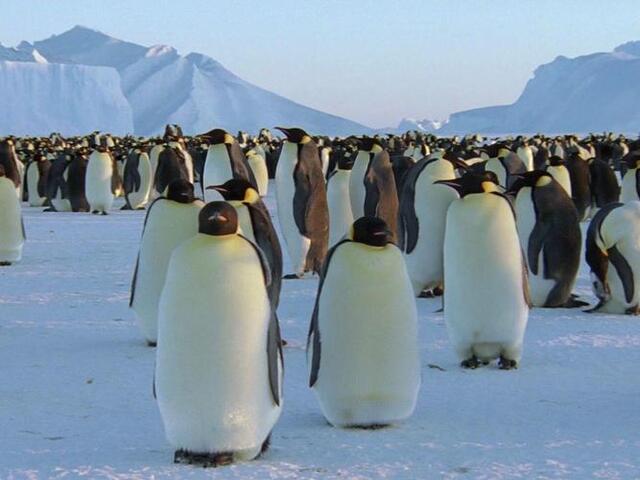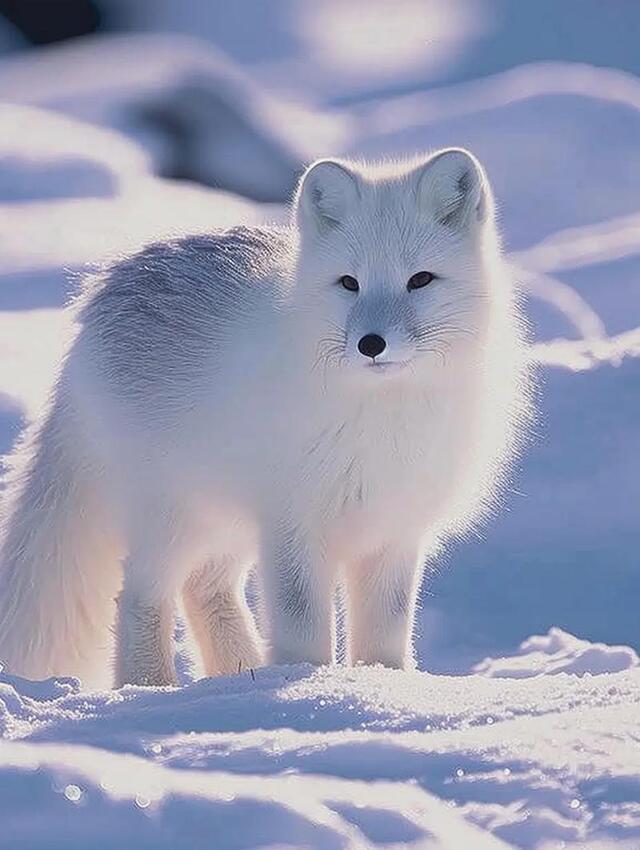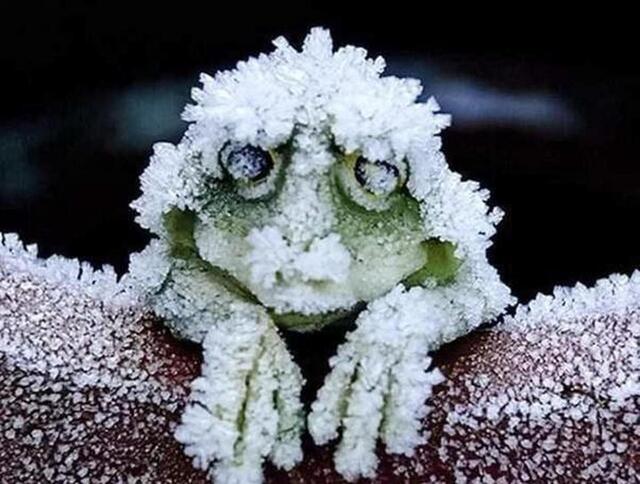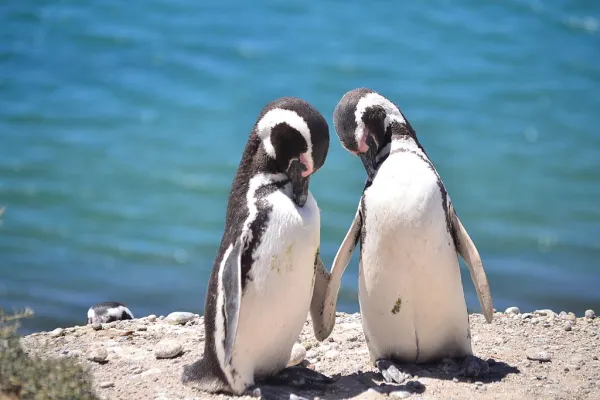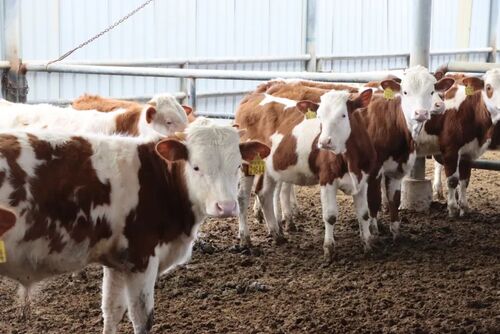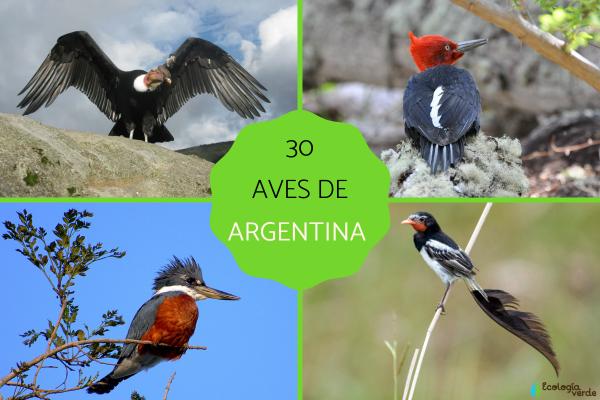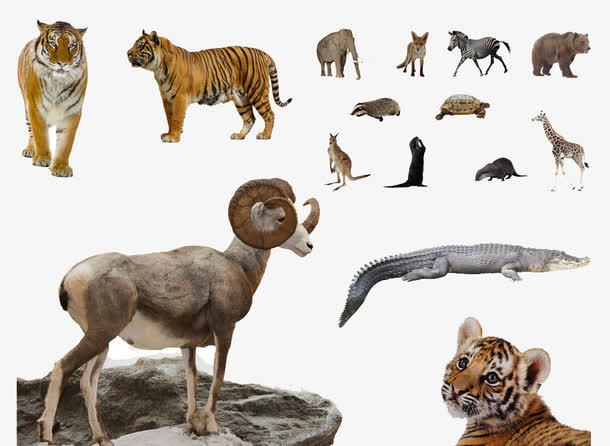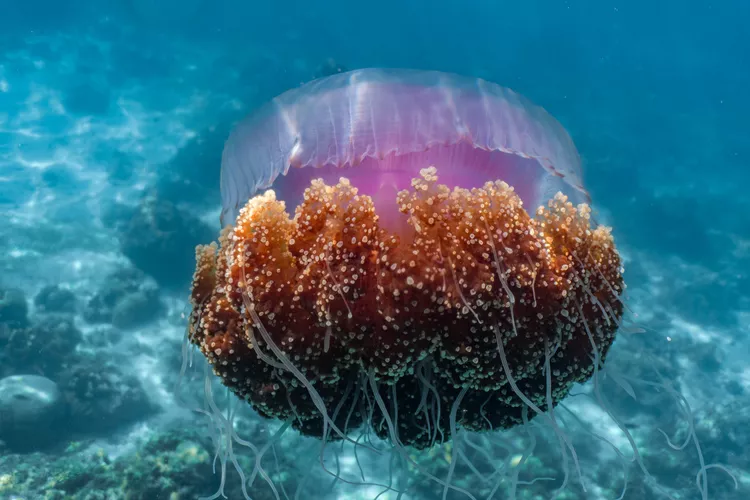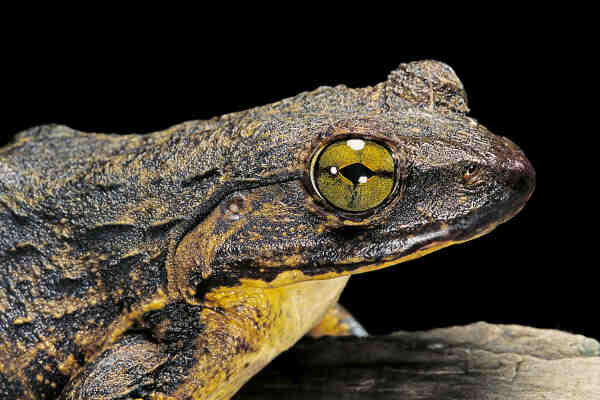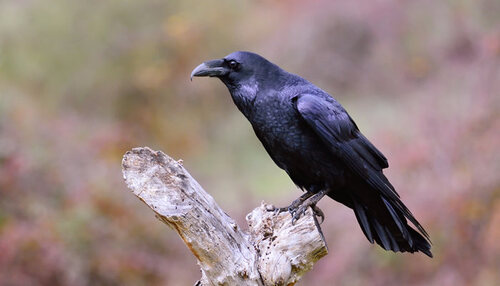In the polar and cold regions of the Earth, temperatures can drop to incredible Tens of degrees below zero, or even lower. However, some animals survive in these extreme environments, demonstrating the incredible adaptability of nature. This article will detail how these animals survive in extremely cold conditions and their unique evolutionary mechanisms. .
1. Arctic Fox: Champion of Cold Hardiness
Overview
Arctic Fox (Vulpes lagopus) They are one of the most cold-resistant mammals in the Arctic Circle. They can withstand extreme low temperatures and are still active even in temperatures of minus 50 degrees Celsius.
Adaptation mechanism
Thick fur: Arctic foxes have the thickest fur in the world One of the furs of an animal, its dense double layer of hair can effectively keep warm. In winter, the fur of the Arctic fox becomes more fluffy and the color changes to white, which helps to hide in the snow.
Small size: Arctic foxes are small in size, with relatively short ears and limbs to reduce heat loss. This "miniaturization" is an adaptation to the extremely cold environment. Typical features.
Cold-resistant soles: The soles of the Arctic fox's feet are covered with thick hair, forming a natural "shoe pad" to help them survive in the cold. Walking on the ground without frostbite.
Survival Strategy
Arctic foxes mainly feed on small rodents and birds. In the cold winter, they will even follow polar bears to obtain remnants. This flexible foraging strategy ensures that they can survive the food-scarce winter.
2. Emperor Penguin: King of the Antarctic Ice
OverviewEmperor penguins (Aptenodytes forsteri) are the only species on Earth that breeds during the harsh winters of the Antarctic continent. Winter temperatures in Antarctica often fall below -60°C. Celsius, strong cold winds make the survival of emperor penguins particularly difficult.
Adaptation mechanism
Thick feathers and fat layer: Emperor penguins have a dense Feathers and a thick layer of fat can effectively prevent heat loss. Their feathers are both waterproof and provide excellent warmth.
Group heating< /strong>: During the Antarctic winter, emperor penguins gather together to keep each other warm and reduce the surface area of their bodies exposed to the cold wind. This grouping behavior is an important strategy for them to maintain body temperature in extremely low temperatures.
Reduce energy consumption: During the winter breeding period, male emperor penguins will not eat for a long time and rely on their body fat storage to survive the incubation period of several months. This mechanism of reducing energy consumption helps them survive in an environment with scarce food.
Survival strategy
The breeding cycle of emperor penguins is closely synchronized with the harsh climate of Antarctica, and their incubation period overlaps with the coldest winter in Antarctica. During this time, male penguins are responsible for incubating eggs, while female penguins go to the ocean to forage for food and reserve energy for the next stage of parenting.
3. Wood Frog: Miracle of Resurrection from Frozen
Overview
The wood frog (Rana sylvatica) lives in the extreme cold of North America, including parts of Alaska and Canada. In winter, this frog can withstand its own internal freezing and enter "frozen hibernation" when the temperature drops below zero.
Adaptation Mechanism
Antifreeze-like blood: Wood frogs prevent freezing inside their cells by producing antifreeze substances such as glucose and glycerol in their blood. These substances can lower the freezing point of the body's fluids, thereby preventing cells from being frozen and cracked.
Partial Frozen: In winter, the wood frog's blood and most of its body fluids freeze, but its vital organs (such as the heart and brain) are able to maintain basic functions. This "partially frozen" state helps them survive in extremely cold environments.
Hypometabolism: During the freezing period, the metabolism of the wood frog almost completely stops. They do not need to breathe and do not consume any energy. When the spring thaws, the wood frog can quickly recover and continue normal activities.
Survival Strategy
This unique "freeze-resurrection" mechanism allows wood frogs to survive the cold winter and regain vitality in the spring. This ability provides them with a great survival advantage because they do not have to migrate or enter deep caves to escape the severe cold.
4. Polar Bears: Top Predators in the Ice and Snow
Overview
Polar bears (Ursus maritimus) are one of the largest land carnivores on Earth, living primarily in the Arctic. They are able to hunt on the cold ice and rely on sea ice as a hunting platform.
Adaptation Mechanism
Thick Fat Layer: Polar bears have a thick layer of subcutaneous fat that can effectively keep warm in extremely cold environments, especially when swimming in the sea, this layer of fat helps them resist the cold sea water.
Double-layer hair: Polar bears' double-layer hair is not only waterproof, but also captures heat from the sun, further enhancing the warmth effect.
Powerful sense of smell: Polar bears have a very sensitive sense of smell and can smell the scent of prey from a very long distance. Even in the snow, they can accurately find prey.
Survival strategy
Polar bears' main food source is seals. They usually wait on the sea ice and wait for seals to emerge from the breathing holes on the ice surface before hunting. However, as climate change leads to a decrease in sea ice, polar bears' hunting strategies are facing new challenges.
5. Antarctic fish: cold-blooded creatures under the ice
Overview
Antarctic fish, such as the Antarctic icefish (Channichthyidae), live in extremely cold Antarctic waters, where the temperature remains around minus 1.8 degrees Celsius year-round. Yet, these fish are able to move freely in such low temperatures.
Adaptation mechanisms
Antifreeze proteins: Antarctic fish have special antifreeze proteins in their blood that prevent the blood from freezing. These proteins bind to water molecules, preventing them from forming ice crystals, thus ensuring that the fish's blood flows normally in low temperatures.
Low metabolic rate: These fish have a very low metabolic rate, which helps them reduce energy consumption and adapt to the cold environment.
Survival Strategies
Antifreeze proteins in Antarctic fish are key to their survival in extreme cold. This adaptation helps them find abundant food sources in the cold waters of Antarctica while avoiding damage to their body functions due to low temperatures.
The coldest animals on Earth demonstrate the extraordinary ability of biological evolution to survive in extreme cold environments through various adaptations. From the thick fur of Arctic foxes to the frozen hibernation of wood frogs, life in extreme cold environments is one of the most amazing wonders of nature. The unique survival strategies of these animals not only reveal how they cope with extreme temperatures, but also remind us of the importance of protecting these fragile ecosystems.

